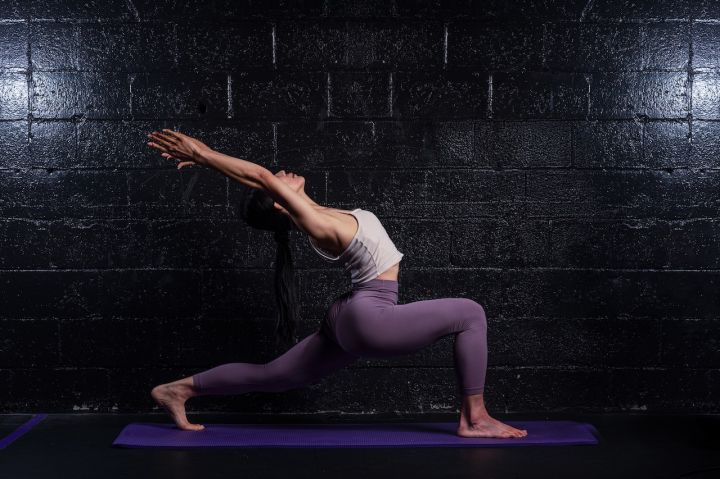Look at a yoga studio's schedule and you will see many different types of yoga, from ashtanga and kundalini to aerial yoga and more. There are even some more modern and less common styles: Paddle board yoga, for example.

Today we present 12 yoga styles: See how to choose the right one for you
1, flow yoga
Flow yoga is a very common style. It is adapted from the more standardised ashtanga. The word "Vinyasa" Translates as "To place in a particular way" And usually links breath and movement.

Suitable for: Anyone who wants to get more movement out of their yoga practice.
2. Hatha yoga
Hatha yoga derives its name from the sanskrit word for the sun and the moon and aims to balance opposing forces. The balance in hatha yoga may come from strength and flexibility, physical and mental energy, or breath and body. Other types of yoga - such as iyengar, ashtanga or hot yoga - are also technically considered hatha yoga.

Suitable for: Anyone seeking a balanced practice or those seeking a gentler type of yoga.
3, ashtanga yoga
Ashtanga yoga consists of six specific poses taught in sequence. It is a rigorous, flowing style of yoga with a unique practice for each student in a mysore style studio.

Suitable for: Anyone with a more physical and spiritual practice.
4, kundalini yoga
Kundalini yoga sequences are carefully designed to relax the body and mind by pairing breath and chanting with chanting, meditation and specific series of postures . It usually begins with chanting, followed by breathing exercises, a warm-up, asanas and finally relaxation and meditation.

Suitable for: Anyone seeking a physical and spiritual practice, or those who enjoy chanting.
5, yin yoga
Yin yoga is a slower style of yoga that aims to increase circulation in the joints and improve flexibility. The practice focuses on the hips, lower back and thighs and uses aids such as mats and blankets to allow gravity to work and aid relaxation. While other forms of yoga focus on the major muscle groups, yin yoga targets the connective tissues of the body.

Suitable for: Those who need to stretch after an intense workout, or who are interested in a slower paced practice.
6, iyengar yoga
Named after its founder bks iyengar, iyengar yoga is known for its clever use of aids. A variety of aids are used in iyengar - including chairs, walls and benches, as well as the more common yoga straps, yoga blocks etc.

Suitable for: Those who enjoy detailed instruction, have physical weaknesses or are looking for a more classic form of yoga.
7, hot yoga
Bikram choudhury developed hot yoga. It is a form of hot yoga. The class consists of a series of poses performed in the same order and the practice has strict rules. Each class is 90 minutes long, with 26 postures and two breathing exercises, in a room with a temperature of 40 degrees and a humidity of 40%.

Practising yoga in a hot environment allows the practitioner to gain a deeper understanding of the poses, improves circulation and helps to detoxify the body
Suitable for: Anyone who likes to work up a sweat and wants more physical activity.
8, power yoga
Like flow yoga, power yoga has its roots in ashtanga but is less rigorous, more active and faster than other yoga styles. Power yoga builds muscle while also increasing flexibility.

Suitable for people: Those who want a high intensity workout.
9, sivananda yoga
Sivananda yoga was created by swami sivananda. Most yoga classes end in stretcher pose, but sivananda starts with this pose, then moves on to breathing exercises, bhajans and then the 12 basic asanas.

Suitable for: Those seeking a gentler form of yoga, and those wanting a more spiritual practice.
10, restorative yoga
This form of yoga uses aids to support the body. The goal is to relax completely and hold for at least five minutes. The focus of restorative yoga is to down-regulate the nervous system. Restorative yoga can benefit those who need to relax and de-stress, and it can also be used as part of self-care on rest days.

Suitable for: Anyone who needs to de-stress, deal with pain and work on relaxation.
11, yoga during pregnancy
Yoga is a great form of exercise for mothers-to-be. Pregnancy yoga focuses on relieving pregnancy-related aches and pains, such as sore hips or lower back pain. Offering stress reduction, exercise and self-care, breathing exercises can come in handy during labour.
Pregnancy yoga also usually includes a number of exercises to prepare your body for labour, such as deep squats and pelvic floor exercises.

Suitable for: Mothers-to-be and new mothers.
12, aerial yoga
Aerial yoga, also known as anti-gravity yoga, uses the principle of suspension to remove some of the weight. The hammock can be used as support for poses such as pigeon pose or downward facing dog and can help you perform inversions (such as headstands and handstands) that are beyond your ability or comfort level with greater ease.

Suitable for: Those who want a non-traditional yoga experience, or who want to be upside down but are afraid.

